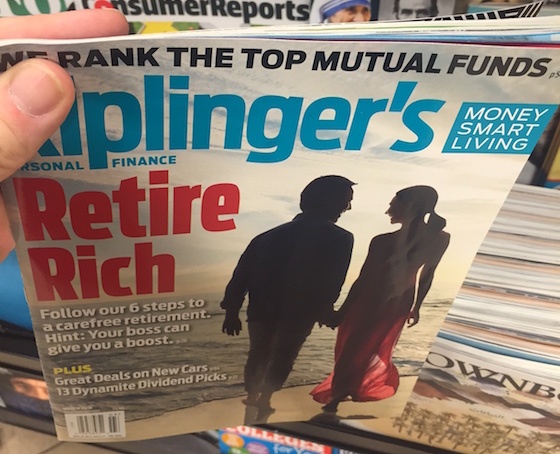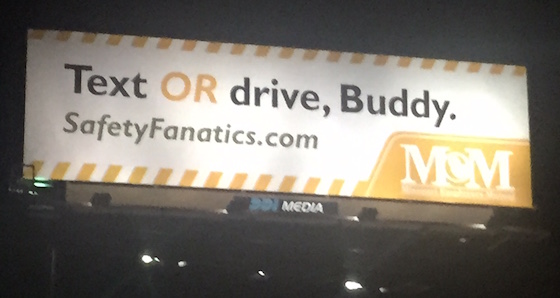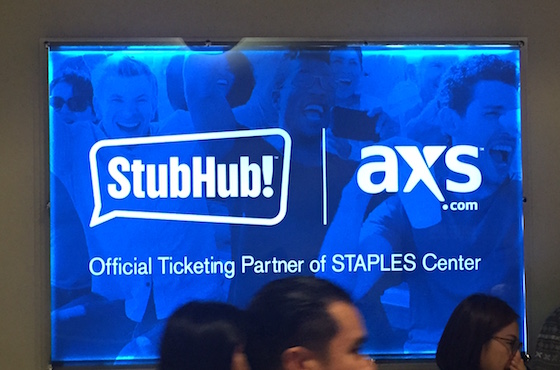Memo From Frank
Someone sent me a photo a couple days ago of a gas station sign they found underneath an old, abandoned billboard. I have had similar experiences in the past, finding historical items in and around old signs. The billboard industry is steeped in history, and the area around old billboards is fertile territory for all kinds of items – a paradise for American Pickers. Back in the day, advertisers used to place additional three-dimensional items on signs, and these often ended up on the ground when the ad was replaced. One of my favorite items was the hand off a giant Marlboro man that I sold to an antique store years ago. But I have also found Burma-Shave items, original Dr. Pepper posters, and even early car parts, such as a hub cap that came off an old Model A Ford and somebody must have leaned up against the billboard 60 years earlier. I think the story of the sign business is fascinating, and I always enjoy being reminded of that history.
Why The Kiplinger Magazine Is Getting Really Thin

I noticed on a newsstand recently the latest edition of “Kiplinger Magazine” which is a well-respected publication that reviews traditional investment options, mostly for retirement. The first thing I noticed, however, was that it was incredibly thin – less than half the thickness that it used to be. I think there’s a good reason for this.
Traditional investments don’t really work any more
People are just plain worn out with traditional investments. They don’t work. They don’t make money. You can’t get anywhere with a 1% CD. You can’t pay the bills with a stock that goes down every day, regardless of what your broker may promise you. Americans are as mad at Wall Street as they are at Washington, D.C. As a result, they’ve given up on reading magazines like Kiplinger’s. They no longer believe that it contains any investment advice that actually performs.
To retire, you need a plan that does not require a lot of capital
On top of that, magazines like Kiplinger’s assume that your whole investment concern is how to make a return on your capital. The truth is, most Americans want to learn how to make capital to begin with. The average American household has around $70,000 for retirement. Even at 10%, that’s only $7,000 per year, which is hardly going to pay the bills in your golden years. For most people, it’s the magnitude of the sheer cash flow that can be created from a combination of small amounts of investment and a whole lot of sweat equity that’s vitally important.
Billboards could be your answer
I’ve written many articles about the high rates of return and low levels of investment necessary to build a billboard portfolio. You can build a large number of wooden signs and vinyl wallscapes on a very limited budget. A $50,000 portfolio of billboards can yield up to $50,000 per year if you are really good at your strategy and effective in your execution.
Conclusion
Kiplinger Magazine, and all of its contemporaries, are no longer of interest to most Americans. The traditional investment world has been a huge disappointment. The future for smart folks going into retirement are alternative investments, of which billboards are a great niche and worthy of further study – time that was formerly spent on reading Kiplinger’s.
The Truth About Public Service Messages

How many billboards do you pass each day that advertise driving more carefully, or not drinking and driving? These type of advertisements are called “public service messages”. But what most people don’t know is that billboard companies install these for financial reasons, not out of the good of their hearts.
Public service messages are used for the tax write-offs
When a billboard company installs a public service message, it’s considered a “donation of advertising space”. They then write this amount off their taxes as charitable giving. So the donation of $1,000 of billboard space yields maybe $400 in actual cash flow. This is one way to use vacant space. But it’s not the best option.
There are much more profitable ways to use vacant space
When you have a vacant sign, you sometimes feel that the problem is that nobody wants it. That’s never true. Everyone wants it. The real reason it’s vacant is either because 1) you’re asking too much or 2) you’ve not hit all the potential advertisers. The truth is that any business would love to have a billboard to increase their sales. And there is a simple plan to convert vacant space into a more compelling system than posting public service messages.
The options
They’re called “pre-emptive” advertisements. Essentially, billboard ads that you can install and take-down at will. Sometimes they’re there for 6 months, and sometimes for 20 days. They are like a “plug” in your occupancy as you transition between two long-term tenants. As a result, they maintain your revenue 12 months per year.
How to do it
There are certain advertisers who are looking for “generic” coverage, not just “exit now”. These may be everything from car dealers to radio stations. You go to these advertisers and tell them that you are interested in placing their advertisement on a vinyl, and rotating it between your empty signs whenever one pops up. In trade, you’ll give them an insanely great rate of around 50% the retail rate. So a billboard that has an asking price of $1,500 per month would cost them only $750 per month. And, of course, the retail rate is traditionally 20% higher than the rate you take, so your net reduction in rent is only about 30%. That’s a whole lot better than a public service ad tax write off. And that’s in actual cash, right now, that you can spend.
Conclusion
Public service messages are not as innocent as they look. They are there for financial gain. But there are better ways for a billboard owner to attain that gain.
Billboard Home Study Course
![]() How to Find a Billboard Location
How to Find a Billboard Location
![]() How to Buy a Billboard
How to Buy a Billboard
![]() How to Build a Billboard
How to Build a Billboard
![]() How to Operate a Billboard
How to Operate a Billboard
![]() How to Rent Ad Space on a Billboard
How to Rent Ad Space on a Billboard
![]() How to Sell a Billboard
How to Sell a Billboard
Get Your Copy Now!
Lessons Learned From The Glamour Days Of Billboards

Billboards, like Hollywood, used to be much more glamorous. They were works of art, and viewed by motorists not as a nuisance but as a privilege. So what was so great back then, and why can’t we replicate it again today?
Ad designs on the level of fine art
The ads from the 1920’s were some of the best the industry has ever produced. They had great designs, copy and execution. If you look at any book on advertising, you will find the award-winning billboards were all from the 1920s. While every ad cannot be a museum piece, many advertisers and billboard companies settle for designs that could be improved on. For example, many advertisers do not take advantage of the potential of vinyl, and its ability to produce full color photos that are giant and attention-getting.
Ornamental pole coverings
Billboards of the 1920s were all multi-pole and traditionally wooden. Back then, they would hide these poles with a combination of lattice work and ornamental design, such as carvings of classic women or columns. These made the sign an asset to the property and not an eyesore. While this is costly, there are many opportunities to hide the columns in a tasteful manner. I have even hidden columns with stucco and brick, when appropriate. You don’t have to go to that extreme, but you should always consider, on every billboard, what could be done to make the sign fit better into its environment.
Neon, movement and extensions
Signs used to be much more spectacular. Each sign had its own touch of Hollywood. While this is not appropriate on every sign, there are some great ways to make any sign more attention-getting. One of the best, although a little costly, is the use of extensions. These are elements of design that extend beyond the top or side of the billboard. I have even gone to the extreme of having headlights and tail lights put on the cars on a sign, and to have an arm move from side to side. All attempts to make the sign more memorable will be rewarded with greater advertiser retention.
Conclusion
It’s still possible to put a little Hollywood glamour into any modern billboard. See if you can go the extra mile, and make your sign the best that it can be.
Outdoor Advertising Opportunities Are All Around You

Most people do not think outdoor advertising 24/7. If they did, they’d start to notice opportunity all around themselves, in many places besides billboards on highways. If you pay attention, you may find some interesting niches out there.
There is a whole world of out-of-home advertising outside of billboards
I’m sure you’ve seen some of the largest sectors, such as signs in shopping malls and in sports stadiums. But you’ll also notice them in airports, high school ballparks, and grocery stores. In fact, there are options everywhere that the public can be found. These are typically high traffic areas, where there is sufficient traffic going by to make the ad space of value.
The fundamentals are the same
If you know how to build and rent billboards, you’ll find that all other forms of out-of-home function in the same manner. You basically rent land, walls, or whatever you will place the ads on. You then have to decide on the size, lighting and how to place the ads. Once you have the prototype identified, you can begin to rent the ad space. Then, of course, it’s all about renting signs, designing the ads, installing them, maintaining them, and collecting the money.
But you have to be a pioneer
Billboards have been around for nearly a century. Other out-of-home concepts have only been around for a couple years, a matter of months, or never before. What this means is that it’s a whole lot harder to rent ads when nobody has any familiarity with this ad option, and to obtain financing when banks have no prior loan experience. Of course, if you succeed, you can build an entire industry. The early pioneers in airport advertising, for example, made a fortune when they sold those ads to the largest billboard companies.
Conclusion
Don’t limit yourself to strictly billboards. Keep your eyes open for additional out-of-home advertising opportunities. They’re everywhere if you keep your eyes opened. And, if you can do billboards, you can do any other similar venture.
New Billboards For Sale On OutdoorBillboard.com
The Market Report
Prices Are Delayed By At Least 15 Minutes
